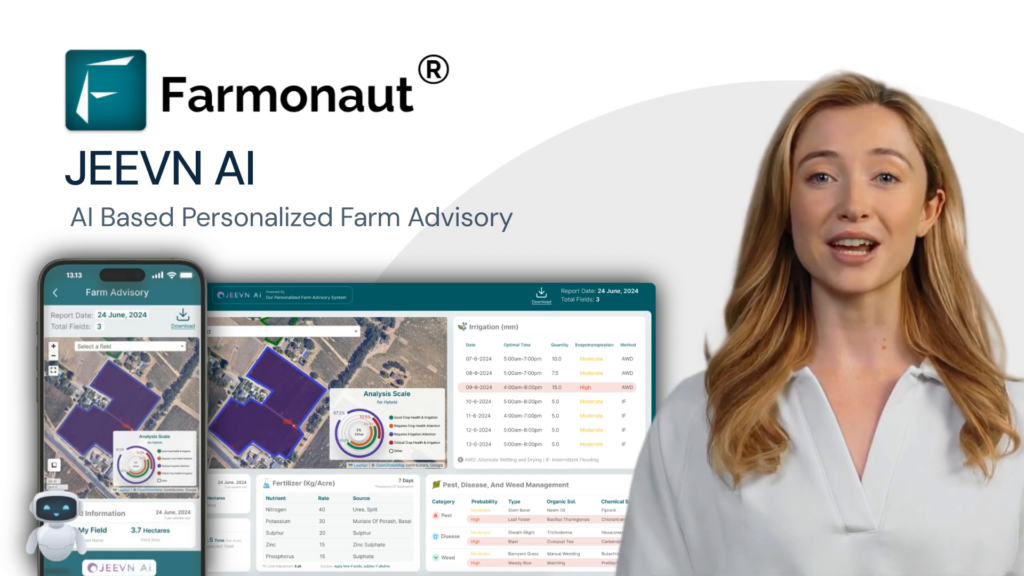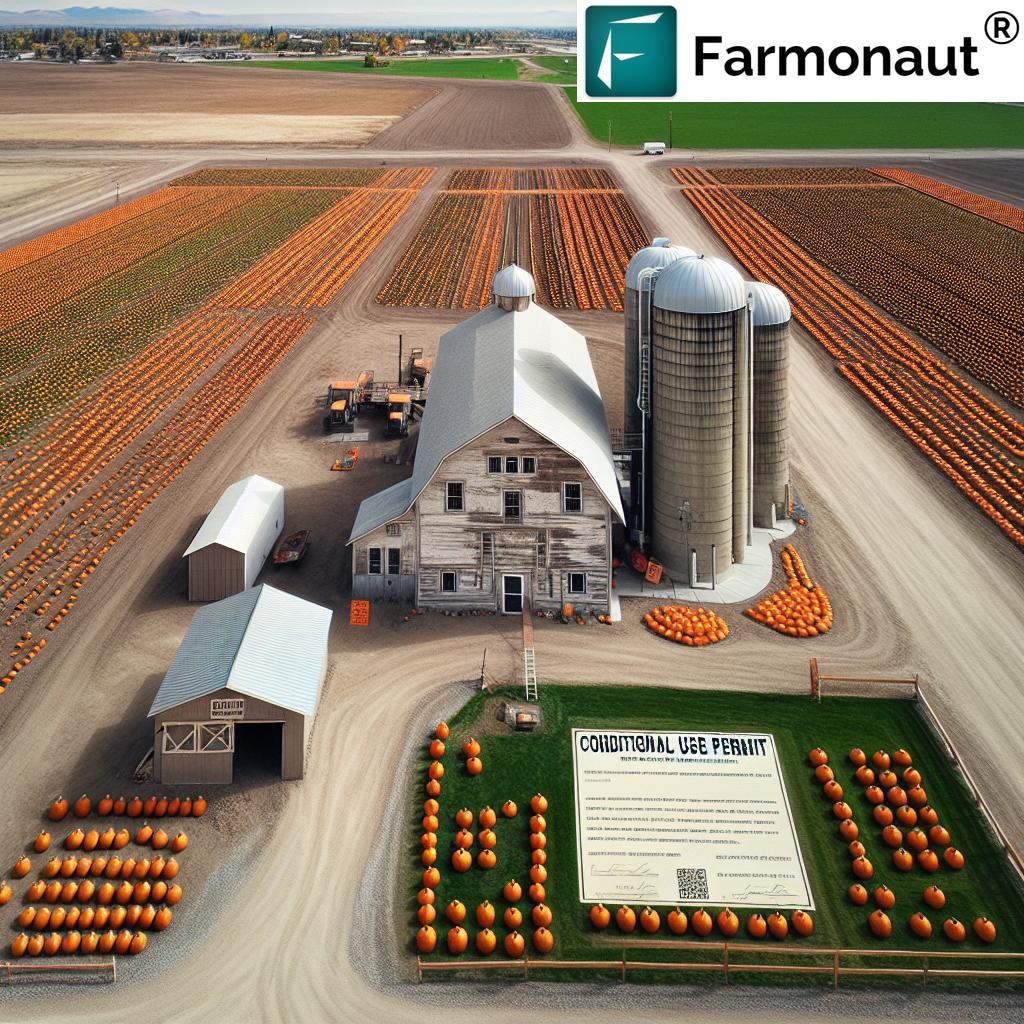Edgefield County’s New Zoning Plan: Preserving Rural Character While Balancing Agricultural and Residential Needs

“Edgefield County’s new Residential Agriculture district could affect approximately 1,600 properties in the southwestern region.”
In the heart of South Carolina, Edgefield County is embarking on a groundbreaking journey to preserve its rural character while adapting to the evolving needs of its residents. We at Farmonaut are closely following this development, as it aligns with our mission to support sustainable agricultural practices and efficient land use management. The county’s recent comprehensive plan update and the proposed creation of a new Residential Agriculture district mark a significant shift in rural land use planning, setting a precedent that could influence similar regions across the country.
The Genesis of Edgefield County’s Zoning Revolution
On January 7, Edgefield County Council completed a pivotal five-year update to its Comprehensive Plan, laying the groundwork for a transformative action on February 4: the creation of a new zoning district aimed at preserving the county’s rural essence. This initiative is not just a bureaucratic exercise; it’s a vital step in codifying plans developed over the prior year, reflecting the community’s vision for its future.
The proposed Residential Agriculture district is designed to encompass a vast area of southwestern Edgefield County, potentially impacting around 1,600 properties. According to Hart “Doc” Clark, the county’s planning director, this new district will cover a land mass greater than all existing zoning in Edgefield County combined. It’s a bold move that showcases the county’s commitment to preserving its agricultural heritage while allowing for measured growth.
Balancing Act: Agriculture, Residential, and Commercial Needs
The primary goal of the new zoning district is to promote agricultural activities and develop commercial uses that complement farming practices. At the same time, it allows for housing with specific restrictions against large-scale multi-family developments. This delicate balance is crucial for maintaining the county’s rural character while accommodating the needs of a growing population.
- Agricultural activities will be safeguarded
- Limited commercial development will be allowed
- Housing will be permitted with restrictions
- Industrial uses will face limitations
This approach reflects a growing trend in rural land use planning, where counties are looking for innovative ways to preserve their agricultural heritage while allowing for sustainable development. It’s a challenge that resonates with our work at Farmonaut, where we use satellite technology to help farmers optimize their land use and productivity.
The Road Ahead: Community Engagement and Implementation
The process of establishing this new zoning district is far from over. Current efforts involve two more readings of the ordinance and a public hearing before the new zoning can be officially established. If approved, the implementation phase will commence, seeking input from the affected property owners. This community-driven approach ensures that local residents’ preferences are reflected in the planning and zoning decisions.
“The zoning plan update process involves multiple readings and public hearings, reflecting extensive community input.”
Tiffani Ireland, the representative for District 2, where most of the proposed land lies, emphasized that this initiative directly responds to the community’s feedback, particularly the sentiment that “we don’t want small lots.” This commitment to preserving larger lot sizes aligns with the county’s vision of maintaining its rural character.
The Role of Technology in Modern Agricultural Zoning
As we at Farmonaut observe these developments, we can’t help but see the potential for technology to play a crucial role in implementing and managing such zoning plans. Our satellite-based farm management solutions could provide valuable insights for both county planners and farmers as they navigate these new zoning regulations.
For instance, our real-time crop health monitoring could help farmers optimize their land use within the new zoning constraints, ensuring that agricultural activities remain productive and sustainable. Additionally, our AI-based advisory systems could assist in making informed decisions about land use that align with both zoning requirements and agricultural best practices.
Explore Farmonaut’s API for advanced agricultural insights
Comparing Zoning Districts: A Clear Picture
To better understand how the new Residential Agriculture district fits into Edgefield County’s existing zoning framework, let’s take a look at a comparison table:
| Zoning District | Minimum Lot Size | Permitted Agricultural Activities | Permitted Residential Density | Allowed Commercial Uses | Conservation Requirements |
|---|---|---|---|---|---|
| Residential Agriculture (New) | 5 acres | All types of farming, livestock | 1 unit per 5 acres | Limited, agriculture-related | 30% open space |
| Rural Residential | 2 acres | Limited farming, no livestock | 1 unit per 2 acres | Very limited | 20% open space |
| Suburban Residential | 0.5 acres | No farming | 2 units per acre | None | 10% open space |
| Commercial | N/A | None | N/A | All types | 5% landscaping |
This table illustrates how the new Residential Agriculture district strikes a balance between preserving large lot sizes and allowing for a mix of agricultural and residential uses. It’s clear that this new zoning classification offers more flexibility for agricultural activities while maintaining a lower residential density compared to other residential zones.
The Impact on Soil and Land Management
One of the key aspects of the new zoning plan is its potential impact on soil conservation and land management practices. By promoting larger lot sizes and encouraging agricultural activities, the Residential Agriculture district could help preserve the quality of Edgefield County’s soil resources.
At Farmonaut, we understand the importance of soil health in sustainable agriculture. Our satellite-based monitoring systems can help farmers and county officials track changes in soil conditions over time, ensuring that the new zoning regulations are having the desired effect on land preservation.
Check out our API Developer Docs for integrating soil health monitoring
Challenges and Opportunities in Implementation
While the new zoning plan offers many benefits, its implementation is not without challenges. Some of the key issues that Edgefield County may face include:
- Balancing the interests of existing property owners with new zoning requirements
- Ensuring fair and consistent application of the new regulations
- Providing infrastructure support for permitted commercial activities in agricultural areas
- Monitoring and enforcing compliance with the new zoning ordinance
However, these challenges also present opportunities for innovation in rural planning and development. For instance, the use of technology like Farmonaut’s satellite monitoring could help in efficient enforcement of zoning regulations while also providing valuable data for future planning decisions.
The Broader Implications for Rural America
Edgefield County’s innovative approach to zoning could serve as a model for other rural communities across the United States. As more areas face pressure from urban sprawl and changing demographics, the need for creative solutions that preserve rural character while allowing for measured growth becomes increasingly important.
Some potential implications of this zoning approach include:
- Increased preservation of prime agricultural land
- Better integration of residential and agricultural uses
- Enhanced opportunities for agritourism and farm-to-table initiatives
- Improved conservation of natural resources and wildlife habitats
These outcomes align closely with Farmonaut’s mission to support sustainable agriculture and efficient land use. Our technologies, such as our blockchain-based traceability solutions, could play a crucial role in helping communities like Edgefield County maximize the benefits of their new zoning approaches.
The Role of Community Input in Shaping Rural Zoning
One of the most crucial aspects of Edgefield County’s zoning update is the emphasis on community input. This approach ensures that the new regulations reflect the desires and needs of the local population. It’s a model of participatory planning that could be replicated in other rural communities facing similar challenges.
Key elements of this community-driven approach include:
- Multiple public hearings to gather feedback
- Engagement with local farmers and property owners
- Collaboration with agricultural and conservation organizations
- Ongoing communication about the planning process and its implications
This level of community engagement not only leads to better-tailored zoning regulations but also builds public support for the changes, making implementation smoother and more effective.
The Future of Rural Zoning: Technology and Tradition
As we look to the future of rural zoning, it’s clear that a balance between preserving traditional land uses and embracing new technologies will be crucial. Edgefield County’s approach demonstrates how this balance can be struck, creating a framework that respects the area’s agricultural heritage while preparing for future growth and change.
At Farmonaut, we see tremendous potential for our technologies to support and enhance these kinds of zoning initiatives. Our satellite-based crop health monitoring and AI-driven advisory systems can help farmers maximize productivity within the new zoning constraints, while our blockchain-based traceability solutions can support the development of local food systems and agritourism initiatives.
Conclusion: A New Chapter in Rural Land Use Planning
Edgefield County’s new zoning plan represents a significant step forward in rural land use planning. By creating a Residential Agriculture district that balances agricultural preservation with limited residential and commercial development, the county is charting a course for sustainable growth that maintains its rural character.
This innovative approach to agricultural property zoning encompasses a vast area of southwestern Edgefield County, potentially affecting around 1,600 properties. The community-driven nature of the planning process ensures that the new regulations reflect the desires of residents to maintain larger lots and protect agricultural land.
As the county navigates this crucial update to its rural zoning ordinance, the process involves multiple readings, public hearings, and extensive community input. This level of engagement is crucial for creating a plan that truly serves the needs of the community.
At Farmonaut, we’re excited to see how technology can support and enhance these kinds of zoning initiatives. Our satellite-based farm management solutions offer powerful tools for monitoring land use, optimizing agricultural practices, and ensuring compliance with zoning regulations.
As rural communities across America face similar challenges, Edgefield County’s approach could serve as a model for preserving agricultural activities while balancing the need for measured development. It’s a testament to the power of thoughtful planning, community engagement, and the integration of traditional land use practices with modern technology.
The future of rural America lies in this delicate balance between preservation and progress. With innovative zoning approaches like Edgefield County’s and the support of advanced agricultural technologies, we can ensure that our rural communities remain vibrant, productive, and true to their heritage for generations to come.
FAQs about Edgefield County’s New Zoning Plan
- What is the main goal of Edgefield County’s new zoning plan?
The main goal is to preserve the county’s rural character while balancing agricultural activities with limited residential and commercial development. - How many properties could be affected by the new Residential Agriculture district?
Approximately 1,600 properties in southwestern Edgefield County could be affected. - What types of activities will be allowed in the new Residential Agriculture district?
The district will allow for agricultural activities, limited commercial uses that complement farming, and restricted housing development. - How is the community involved in the zoning plan update process?
The process involves multiple readings, public hearings, and extensive community input to ensure the plan reflects residents’ desires. - Will industrial uses be allowed in the new Residential Agriculture district?
Industrial uses will face limitations in the new district to preserve its agricultural and residential character.
Earn With Farmonaut: Affiliate Program
Earn 20% recurring commission with Farmonaut’s affiliate program by sharing your promo code and helping farmers save 10%. Onboard 10 Elite farmers monthly to earn a minimum of $148,000 annually—start now and grow your income!
















